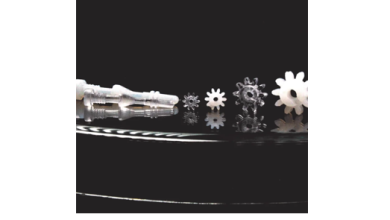Genetic Engineering Advances Mapped with CRISPR Data Tools

Genetic engineering has stood at the forefront of scientific breakthroughs ever since researchers uncovered the structure of DNA. Over the decades, the ability to manipulate and alter genetic code has improved at a steady pace, culminating in the pioneering technology known as CRISPR. Today, CRISPR-based gene editing tools continue to open up new possibilities in biotechnology, medicine, and environmental science, changing the way we look at genetic diseases, agricultural improvements, and even ecological conservation. Indeed, CRISPR promises more precise modifications of DNA, fewer side effects, and a potentially brighter future for gene therapy. Yet, as with all cutting-edge developments, the real challenge lies in managing the troves of data generated by such sophisticated methods. The myriad of results, variables, and complexities that accompany gene editing experimentation can be overwhelming if not properly organised and displayed in a coherent manner.
Data visualisation solutions and specialised charting libraries have emerged to meet this challenge by providing a dynamic way to illustrate everything from off-target effects to gene expression patterns. Navigating this plethora of data is not simply about analytics but also about clarity of communication. Large-scale genomic projects call for interactive graphs that allow researchers to explore relationships between genes, track mutation frequencies across multiple samples, and compare the overall efficacy of editing protocols. Combining novel gene editing processes with real-time data and advanced visualisation promises to push forward the boundaries of what modern science can achieve.
A developer from SciChart recently shared a professional insight on the significance of stable and scalable data visualisation frameworks when interpreting CRISPR research outcomes. They advised that the key lies in creating platforms that can handle large datasets without sacrificing performance, while also allowing precise interaction. According to this developer, success in this domain depends on real-time rendering and intuitive charts that facilitate quick yet accurate decision-making in laboratories.
The CRISPR Revolution
The discovery of CRISPR (Clustered Regularly Interspaced Short Palindromic Repeats) is often traced back to observations in bacterial genomes. Bacteria, exposed to recurrent viral attacks, developed a unique defence mechanism that involved capturing snippets of viral DNA and inserting them into their own genome, effectively allowing them to recognise and fend off future invasions. This bacterial immune strategy turned out to be a treasure trove for human genetic engineering, as scientists managed to adapt the system to precisely cut DNA at targeted locations.
In contrast to earlier gene editing methods like Zinc-Finger Nucleases (ZFNs) or Transcription Activator-Like Effector Nucleases (TALENs), CRISPR provides a more straightforward and adaptable methodology. Utilising a guide RNA to direct the CRISPR-associated protein 9 (Cas9) enzyme to a precise locus enables researchers to cleave DNA with significant precision. Over the years, continuous advancements have broadened the CRISPR family, incorporating systems like as Cas12a and Cas13, each possessing distinct characteristics for editing DNA or RNA.
This revolution in gene editing has already had a real-world impact. Clinical trials have explored the use of CRISPR to treat genetic diseases like sickle cell anaemia, with some promising early results. Agricultural research has benefited similarly, using gene-editing to develop pest-resistant crops or to engineer plants with a higher nutritional content. Nevertheless, one major outcome of this accelerated innovation is the exponential rise in data generation. As labs fine-tune CRISPR experiments by comparing editing efficiencies, checking for off-target cuts, and verifying gene expression changes, a sophisticated support system becomes necessary to keep all this information accessible, clear, and useful.
The leap from laboratory bench to widespread clinical or agricultural application depends on how effectively scientists can process, comprehend, and share the growing avalanche of genomic data. This pressing need has propelled efforts to produce refined data pipelines, from raw sequencing outputs to polished visual dashboards. Genetic engineering has always demanded robust data solutions, but CRISPR’s capacity for precise editing on a massive scale requires tools that can track, measure, and visualise results in a manner that is both accurate and intuitive.
Mapping CRISPR Data: The Need for Powerful Visualisation
CRISPR-based experiments generally generate large volumes of information. Research teams work with multiple cell lines, gene targets, and editing parameters, collecting data at every stage of their investigation. Sequencing platforms capture millions of reads, each offering insights into genetic modifications, integration efficiency, or unexpected alterations to non-target genes. Rather than simply storing reams of figures in databases, many labs require dynamic charts and graphs to tease out meaningful trends.
Visualisations can reveal nuances in gene editing outcomes, such as subtle shifts in mutation rates or patterns that might suggest certain genetic loci are more susceptible to off-target effects. The ability to drill down into a chart and explore the underlying raw data helps ensure that scientists can replicate findings, spot anomalies, and troubleshoot experiment designs. Equally, these charts facilitate cross-laboratory collaborations, providing a common language for discussion and enabling swift comparisons of results.
An especially useful feature of robust charting solutions in the CRISPR realm is the capability to update data sets in real time. When new results are obtained, whether from next-generation sequencing runs or from automated gene expression assays, the visualisation should refresh seamlessly. This allows immediate comparison between current outcomes and historical data, prompting researchers to adapt procedures promptly if needed. Thus, the synergy between a powerful gene editing tool and advanced data visualisation frameworks forms the heart of next-generation research strategies, ensuring that CRISPR keeps moving from theoretical promise to tangible solutions.
The Role of Data Tools in Addressing Complexity
Genetic engineering projects using CRISPR can involve many stages, including design of the guide RNA, implementation of the editing protocol in a chosen organism, and post-editing analysis. At each step, data accumulates from instruments that measure gene insertion, track off-target edits, or evaluate cellular responses like protein expression. With so many variables in play, standard spreadsheets can quickly become inadequate, forcing labs to rely on specialised platforms.
These platforms are expected to integrate with laboratory information management systems (LIMS) and sequence analysis tools. The visual output must allow users to filter results by gene target, date, or experiment type, combining these results in layered charts that display complex relationships in a digestible manner. If a researcher observes an unexpected trend—say, that certain environmental conditions lead to a spike in editing success—they can pivot immediately to verifying whether those conditions might also cause unintended mutations or hamper cell viability.
When discussing how to visually represent data, interactive elements are often essential for large-scale genomic research. Zooming in and out of data sets, sorting results by sample group, and toggling various overlays are all critical. The best tools in this domain supply a level of customisation that respects the specialised demands of CRISPR research. Ideally, a researcher should be able to switch between a genome-wide perspective and a single base pair location to see where the CRISPR machinery has performed a cut. Doing so might reveal unexpected correlations or confirm that all edits occurred precisely as intended.
Open-source libraries and commercial frameworks have built strong reputations in data visualisation for scientific applications, with some focusing on seamless rendering, while others emphasise customisation. Interestingly, many of these tools use JavaScript charts at their core, ensuring compatibility across different devices and operating systems. This responsiveness makes it easier for geographically dispersed teams to examine and share their findings without major technical barriers. As a result, cloud-based platforms often emerge, bridging the gap between research teams who want remote access to real-time results, and those who value advanced charting capabilities coupled with robust security.
Integrating CRISPR Editing and JavaScript Charts
One of the reasons behind the popularity of web-based solutions in CRISPR analytics is the accessibility they provide. Rather than being restricted to a local machine loaded with proprietary software, researchers can log in to a secure portal and instantly visualise their data. In many cases, the user interface relies on interactive elements that allow filtering by gene type, alignment scores, or cell line. Under the hood, these solutions will often rely on advanced JavaScript charts, ensuring that the interface remains responsive and stable even for large data sets.
When CRISPR experiments are scaled up—whether to screen thousands of guide RNAs or to track gene expression changes in multiple tissues—visual performance becomes a high priority. The smoother the charts, the more readily the viewer can detect anomalies such as outlier values or unusual patterns. This, in turn, contributes to more reliable decision-making, helping researchers identify whether a candidate guide RNA is truly effective or if a short-lived anomaly skewed the data.
Further, these interactive charts offer details on demand, meaning a researcher can hover over a data point to reveal exact editing frequencies or mismatch rates. This eliminates the need to constantly switch between multiple software tools, reducing complexity while simultaneously preserving the depth and breadth of information. By tapping into the capabilities of JavaScript charts, data from gene editing can be displayed on layered timelines, 3D structures, or colour-coded heat maps, ensuring that the intricacies of CRISPR experiments are not lost in a tangle of text-based output.
Emerging Trends in CRISPR Research and Data Management
CRISPR research is an ever-evolving field, influenced by breakthroughs that range from technique refinements to entirely new applications. These leaps forward bring with them novel forms of data, requiring fresh approaches to visualisation. One such emerging trend involves base editing and prime editing, refined offshoots of the traditional CRISPR-Cas9 system. With base editing, researchers can swap one DNA base for another without introducing double-strand breaks. Prime editing enables even more flexible modifications. However, these methods also expand the complexity of data produced.
Studies looking into base editing often need to track not just where an edit occurred, but precisely which nucleotides were altered. Fine-grained visualisations become paramount in verifying that no unintended base pairs are replaced. Similarly, prime editing generates a variety of intermediate structures, meaning that each result requires a distinctive approach to confirm its success.
Another intriguing area lies in multiomics, where data from genomics, transcriptomics, proteomics, and metabolomics is combined. CRISPR is now used to trigger targeted modifications across these different layers of biological activity. While this synergy can yield unprecedented insights, it also produces a multi-dimensional data set that can be daunting. Successful analysis might rely on heat maps of gene expression, superimposed onto metabolic pathways, all connected by interactive nodes that track protein abundance. The complexity demands advanced charting solutions that seamlessly overlay these different data forms in a single integrated format.
Even as the methods of gene editing branch out, ethical considerations remain an important aspect. With greater power to alter living organisms comes greater responsibility. Whether these edits concern human embryos, animals, or plants, scientists and policymakers must carefully weigh the risks and benefits. Robust data visualisation, in this context, plays an unexpected but crucial role. By illustrating the potential long-term effects of particular edits—perhaps changes in biodiversity or genetic stability—these tools can help stakeholders make more informed choices, bridging the gap between research findings and societal implications.
The Future of CRISPR and Data Visualisation
As CRISPR technology matures, it is becoming clear that data management and interpretation are intrinsic to sustained progress. Genetic engineering, once a niche area of research, now touches numerous fields, from pharmaceutical development to climate-resilient agriculture. Each application brings its own array of data nuances. Precision medicine requires patient-specific edits, with an ever-growing volume of clinical data. Agricultural biotechnology relies on large-scale field trials that measure yield, resistance, and ecological footprints. Environmental applications, such as gene drives aimed at controlling pest populations, involve complex modelling of entire ecosystems over extended periods.
It is no longer enough for charting solutions to be visually appealing; they must integrate with advanced analytics, machine learning algorithms, and real-time sensors in the lab or in the field. For instance, a researcher using CRISPR on a crop plant might employ drones or ground-based sensors to collect data on plant growth. This data then flows into a central platform, which uses JavaScript charts to present day-to-day changes and highlight the differences between control and edited groups. If the chart reveals early indicators of stress, the research team can adapt their approach or investigate whether off-target edits are influencing resilience.
Further developments in hardware and software will likely shape the next stage of CRISPR analytics. More powerful sequencing instruments, combined with smaller, more portable devices, will extend gene editing outside traditional labs, necessitating equally portable data visualisation methods. Cloud-based solutions, in particular, will continue to rise in prominence, enabling real-time collaboration and seamless updates across continents. Meanwhile, new algorithms will enhance predictions of off-target effects, simplifying the data deluge by highlighting the most relevant findings for deeper examination.
Educational programmes and training will have to adapt as well. If CRISPR is going to become an integral part of future biology and medicine, both researchers and technicians must become adept at not only executing experiments but also interpreting the resulting data. This entails comfort with charting libraries, familiarity with standard analysis pipelines, and the ability to draw meaningful insights from complex visual outputs. Institutions around the world are already developing modules that integrate coding and genetic engineering, preparing a new generation of scientists who can navigate the intersection of computation and biology with ease.
Despite the rapid progress, the full promise of CRISPR remains on the horizon. Unravelling the deeper layers of genomic regulation, epigenetics, and systems biology will likely require editing tools beyond even the sophisticated incarnations of Cas9. Yet each step toward refined gene editing will create a parallel need for refined data handling. Viewing this landscape holistically, one sees that CRISPR is not just a revolution in how we edit genes; it is also a revolution in how we generate, analyse, and visualise genetic data.
Rethinking Collaboration and Communication in Genetic Engineering
Collaboration has become the bedrock of scientific advancement, with teams across the globe sharing techniques, data, and results. The field of gene editing is inherently interdisciplinary, drawing on molecular biology, computational science, bioinformatics, robotics, and more. Data tools serve as the nexus for these diverse perspectives, allowing a computational scientist to highlight unusual read alignments, while a bench biologist notices a pattern of unexpected phenotypic changes.
When it comes to CRISPR, a universal language of data visualisation emerges as a catalyst for breakthroughs. Researchers can unify around an interactive dashboard that illustrates real-time statistics on editing efficiency or cell viability, with each team member able to add their own insights as they hover over a time-series chart or a 3D genome browser. By simplifying the process of turning raw numbers into comprehensible patterns, these dashboards lift many of the barriers that once slowed down global cooperation.
There is also a communicative benefit that extends beyond the lab or the research group. Regulatory agencies and public communities often struggle to follow the specialised vocabulary of gene editing. Intuitive charts, however, can capture key insights in a visually appealing form that resonates with a broader audience. Whether illustrating the difference between wild-type and edited cells or showing how CRISPR can reduce dependence on pesticides, data visualisation becomes an effective medium for transparent, fact-based communication.
In the British context especially, where public trust in scientific advancement can hinge on clear and honest presentations, the role of visualisation in bridging the gap between researchers, policymakers, and citizens cannot be understated. Detailed but digestible charts inspire confidence that CRISPR research is moving forward responsibly. Equally, open dialogues facilitated by transparent data can help refine the direction of funding, ensuring that only the most ethically and ecologically sound CRISPR innovations gain traction.
Overcoming Challenges with Data Privacy and Security
As powerful as CRISPR may be, the data that emerges from gene editing experiments can be deeply personal, particularly if it involves human subjects. Researchers must navigate regulations meant to safeguard patient privacy, ensure ethical data use, and adhere to strict protocols. Large-scale, cloud-based systems that rely on frameworks for data visualisation—such as solutions built around JavaScript charts—need stringent access controls, encryption protocols, and audit trails.
The complexity grows when multiple institutions collaborate. Data-sharing agreements must be firmly in place, and the charting tools must offer secure ways to anonymise or segregate sensitive information. While it is often valuable to compare editing outcomes or off-target rates across multiple sites, relevant authorities may require extra caution whenever data sets contain potentially identifiable details. Balancing openness and privacy is a major concern in genetic engineering, particularly as CRISPR moves closer to routine clinical use. Researchers must rely on robust, compliant platforms that meet these rigorous demands.
The ability to implement role-based permissions within data visualisation tools plays a major role in ensuring security. Some users, such as principal investigators or data analysts, may need access to raw numbers or even identifiable patient data. Others, perhaps external reviewers or the broader public, might only need to see aggregated charts or anonymised summaries. Advanced solutions in this domain already exist, offering modular layers of access while still providing the flexibility that high-level research teams need.
Even more important is the capacity for rapid response in the event of unforeseen issues. If a security breach occurs, it is essential for administrators to quickly pinpoint its scope and isolate sensitive data. Proper logging and transparent oversight within the data tool can reduce the likelihood of major disruptions and maintain confidence in the system as a whole. As CRISPR research edges into mainstream medicine, public trust will hinge on the clarity and reliability of the data pipeline used to manage patient records and experimental outcomes.
Conclusion
The frontiers of genetic engineering are expanding at a breathtaking pace, thanks in large part to the unparalleled precision of CRISPR. Each successful step in unlocking genetic secrets promises new therapies for previously intractable illnesses, higher-yielding crops that mitigate food shortages, and a deeper understanding of life’s molecular underpinnings. Yet these possibilities depend on the careful navigation and interpretation of the vast swathes of data that arise from gene editing procedures. The scientific community has discovered that the key to sustained progress lies in effective data management, from how experiments are designed and stored to how they are visualised and shared.
In the midst of this data revolution, visualisation frameworks and charting libraries have become indispensable allies. By distilling complicated outcomes into clear graphs, these tools empower researchers to focus on refining CRISPR methods and tackling new challenges. Many such platforms operate through the powerful medium of JavaScript charts, harnessing their responsiveness and interoperability to handle real-time updates and large-scale collaborations. When integrated with secure cloud systems and advanced analytics, these frameworks offer a complete environment for monitoring, exploring, and extracting meaning from genomic data.
What truly distinguishes this era of gene editing is not only the power of CRISPR itself but also the collaborative networks it fosters. Modern charting solutions and open, interactive dashboards bring computational scientists, molecular biologists, and policymakers together, facilitating informed discussions that span geographical and disciplinary boundaries. Ethical debates, regulatory considerations, and public outreach find support from transparent visualisations that translate complex data into understandable insights.
The future of genetic engineering will be shaped by continued refinement of CRISPR, encompassing base editing, prime editing, and ever more ingenious adaptations. Alongside these advances, data tools must evolve to accommodate multiomics analyses, cross-platform integration, and the stringent demands of patient privacy. The union of CRISPR technology and sophisticated data visualisation will likely become the cornerstone of biology and medicine in the coming decades, guiding us toward new frontiers of knowledge and application. It is precisely in this synergy that the next generation of scientific triumphs will emerge, mapping out the potential of life’s fundamental blueprint in ways that seemed inconceivable just a few years ago.




